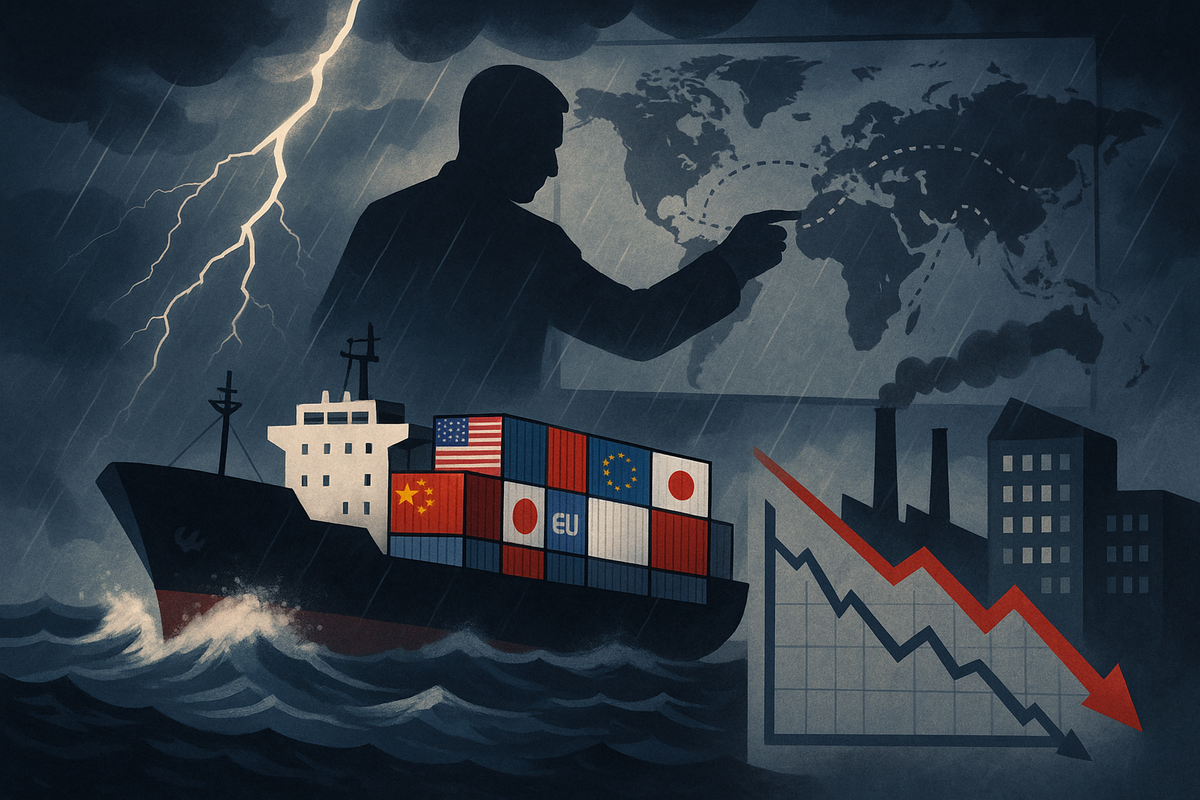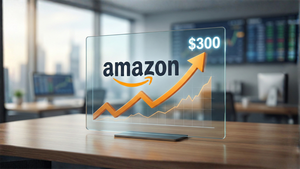
President Trump's tariff policies continue to cast a long shadow over global trade, directly impacting corporate revenues and earnings reports across a multitude of industries. What began as a strategic move to rebalance trade deficits and bolster domestic manufacturing has evolved into a complex web of increased costs, supply chain disruptions, and heightened economic uncertainty for businesses worldwide. Companies are grappling with the dual challenge of absorbing higher input costs and navigating unpredictable policy shifts, often leading to missed financial targets and a re-evaluation of global operational strategies.
The ripple effects of these trade policies are far-reaching, influencing everything from consumer prices to investment decisions. As the administration doubles down on its protectionist stance, with new tariffs on Indian goods and threats of escalating duties on critical sectors like semiconductors and pharmaceuticals, the financial landscape for public companies becomes increasingly precarious, demanding agile responses and strategic foresight to mitigate the adverse impacts on their bottom lines.
What Happened and Why It Matters
The core of President Trump's trade policy involves the imposition of tariffs, which are essentially direct taxes on imported goods. These duties increase the cost of foreign products, with the burden often shared between domestic consumers and businesses, depending on market dynamics. The primary aim has been to incentivize domestic production and reduce reliance on foreign supply chains, particularly from countries deemed to engage in unfair trade practices. However, the immediate consequence for many U.S. companies has been a significant rise in their input costs, especially for those heavily reliant on imported raw materials or components.
Beyond the direct financial hit, the frequent and often unpredictable announcements of new tariffs have injected a substantial degree of economic policy uncertainty into the market. This uncertainty, as reflected in indices like the Economic Policy Uncertainty (EPU) Index, has caused firms and households to postpone crucial decisions regarding investment, hiring, and consumption. Projections suggest that these policies could lead to a reduction in long-run GDP and wages, while simultaneously contributing to inflationary pressures on everyday goods. For businesses, this translates into squeezed profit margins, as they either absorb the increased costs or pass them on to consumers through higher prices, risking dampened demand. Numerous companies have already issued profit warnings or reported direct hits to their revenues and earnings, underscoring the tangible financial impact of these trade policies.
The Impact on Corporate Giants: Winners and Losers
The landscape shaped by tariffs has created clear financial challenges for many corporate giants, forcing them to adapt or face significant setbacks. While the concept of "winners" is less straightforward, companies that have managed to mitigate the impact through strategic shifts or domestic sourcing could be seen as relatively better positioned.
Among the most vocal about the negative impact is Caterpillar Inc. (NYSE: CAT), the global manufacturing powerhouse. The company has warned of an estimated $1.5 billion impact from tariffs in 2025, with a significant portion affecting its manufacturing costs and profit margins. Caterpillar's adjusted second-quarter profits dropped to $4.72 per share, falling short of analysts' estimates, a miss largely attributed to tariff costs and slightly lower prices. The company's operating profit margin also saw a notable decline, reflecting the burden of higher tariffs.
Similarly, Yum! Brands, Inc. (NYSE: YUM), the parent company of KFC, Taco Bell, and Pizza Hut, has felt the pinch. The fast-food giant missed analysts' estimates for second-quarter comparable sales and profit, with adjusted profit falling below expectations. This shortfall was linked to higher ingredient and elevated input costs, which contributed to a 13% increase in total costs and expenses during the quarter. Beyond direct input costs, the broader economic uncertainty stemming from tariffs has also muted U.S. consumer spending on dining out, compelling chains like Yum! Brands to offer budget-friendly deals to attract customers.
Other notable companies facing significant headwinds include Apple (NASDAQ: AAPL), which reported absorbing $800 million in tariff-related costs in one fiscal quarter, with projections for an even larger hit. Automakers like Ford (NYSE: F) and General Motors (NYSE: GM) have faced billions in extra costs due to increased steel prices, while Honda (NYSE: HMC) and Volkswagen (OTC: VWAGY) have also reported substantial profit declines linked to tariffs. Retailers such as Walmart (NYSE: WMT), Best Buy (NYSE: BBY), and Macy's (NYSE: M) have warned of or implemented price increases, passing on tariff costs to consumers. Even small businesses, which constitute a vast majority of U.S. importers, have been disproportionately affected, facing strained cash flow and disrupted supply chains.
Industry Impact and Broader Implications
The tariff landscape is not static; it continues to evolve with new impositions and threats, carrying profound implications for various industries and global trade relations. A recent development is the imposition of a new 25% additional tariff on Indian goods, primarily as a penalty for New Delhi's continued purchase of Russian oil. This tariff, effective within 21 days of its August 6, 2025, announcement, stacks on top of an existing 25% duty, bringing the total tariff on many Indian goods to a staggering 50%. India has vehemently condemned this move, signaling potential retaliatory measures.
This new tariff is expected to severely impact over 55% of India's exports to the U.S., with industries such as textiles, leather goods, marine products, auto parts, garments, and chemicals being particularly vulnerable. Exporters in these sectors will face significantly higher costs, reduced competitiveness, and potential loss of market share in the lucrative U.S. market.
Beyond India, President Trump has also threatened increased tariffs on critical sectors: semiconductors and pharmaceuticals. While specific rates for semiconductors are yet to be detailed, the aim is to boost U.S. domestic manufacturing. For pharmaceuticals, the threat is even more aggressive, with potential tariffs escalating dramatically to 150% and then as high as 250% within one to one-and-a-half years, driven by the desire for all pharmaceuticals to be manufactured within the United States.
These threatened tariffs carry immense implications. India is a major global hub for pharmaceuticals, supplying a significant portion of generic drugs to the U.S. Such high tariffs would have a "massive impact" on India's pharmaceutical sector, potentially forcing companies to seek alternative markets. For American consumers, these tariffs could lead to a substantial increase in the cost of medicines, as domestic manufacturing may entail higher production costs. Similarly, tariffs on semiconductors could disrupt the global supply chain, impacting industries heavily reliant on chips, including the Indian automotive sector, which is fully dependent on imported semiconductors. These actions not only reshape supply chains but also reflect growing strains in bilateral ties, complicating future trade negotiations and highlighting the geopolitical dimensions of trade policy.
What Comes Next
The path forward for businesses and economies under the shadow of ongoing tariff policies is characterized by both challenges and the necessity for strategic adaptation. In the short term, companies will likely continue to employ a mix of strategies to navigate the increased costs. Many will be forced to raise prices for consumers, as seen with retailers like Target (NYSE: TGT) and Kroger (NYSE: KR) diversifying their supplier bases away from heavily tariffed regions. Others may continue to absorb a portion of the costs, albeit at the expense of profit margins, or accelerate efforts to shift their supply chains to countries less affected by tariffs.
In the long term, the persistent threat of tariffs could catalyze more significant strategic pivots. Companies may increasingly invest in domestic manufacturing capabilities, as exemplified by AstraZeneca's plans to produce all its drugs for the U.S. market domestically. This could lead to a re-shoring or near-shoring of production, reshaping global supply networks that have been optimized for decades based on cost efficiencies. Such shifts, while potentially reducing tariff exposure, could also lead to higher production costs and, consequently, higher prices for consumers.
Market opportunities may emerge for domestic producers who can fill the void left by more expensive imports. However, the overall economic environment is likely to remain uncertain, with potential for continued inflationary pressures and dampened consumer demand. Investors will need to closely monitor trade policy developments, company earnings reports for direct tariff impacts, and broader economic indicators to gauge the evolving landscape. The potential for retaliatory tariffs from affected nations also remains a significant risk, further complicating international trade relations and adding another layer of unpredictability.
Conclusion
President Trump's tariff policies have undeniably created a turbulent environment for corporate earnings, transforming trade into a significant cost burden for businesses across various sectors. From manufacturing giants like Caterpillar Inc. (NYSE: CAT) grappling with billions in increased expenses to consumer-facing companies like Yum! Brands, Inc. (NYSE: YUM) facing higher input costs and muted demand, the direct financial impact is evident in missed earnings estimates and squeezed profit margins. The recent 25% tariff on Indian goods and the looming threat of escalating duties on critical sectors like semiconductors and pharmaceuticals underscore the administration's unwavering commitment to its protectionist agenda, promising continued disruption.
Moving forward, the market will likely continue to experience heightened uncertainty, with companies forced to make difficult choices between absorbing costs, raising prices, or fundamentally restructuring their global supply chains. This era of "tariff troubles" is not merely a temporary blip but a significant force reshaping international trade dynamics and corporate strategies. Investors should remain vigilant, closely scrutinizing company earnings calls for specific mentions of tariff impacts, monitoring the trajectory of trade negotiations, and assessing the broader implications for inflation and consumer spending. The lasting impact of these policies will likely be a more fragmented global supply chain, increased domestic production in some sectors, and potentially higher costs for consumers, making adaptability and strategic foresight paramount for businesses navigating this complex new reality.




